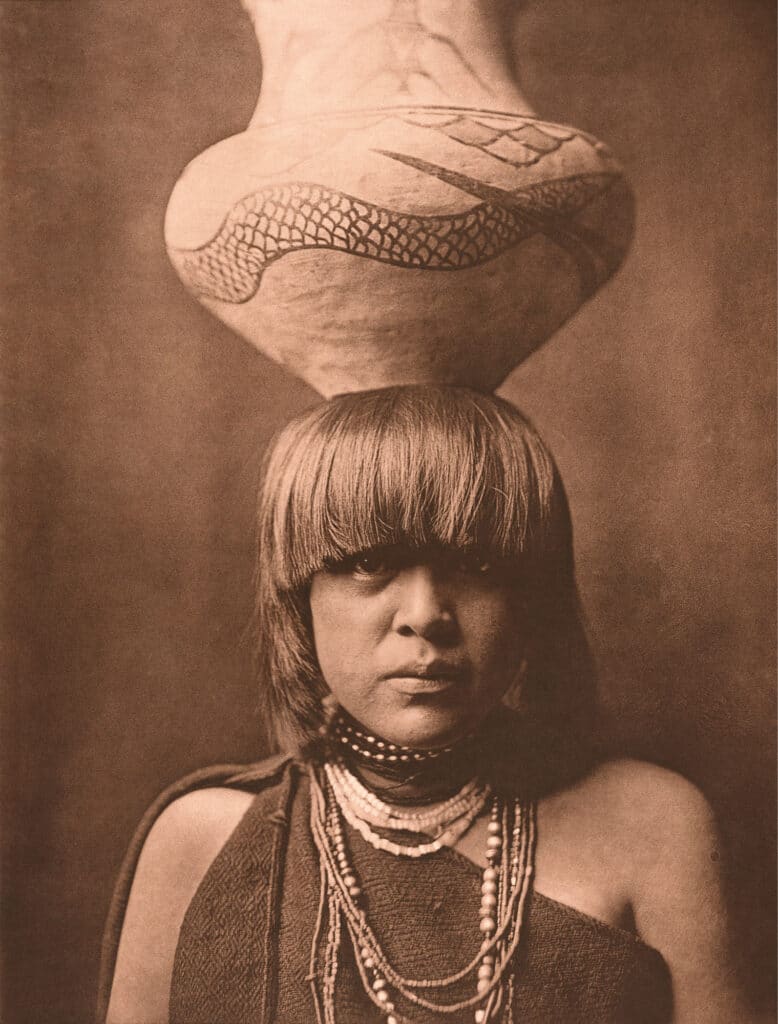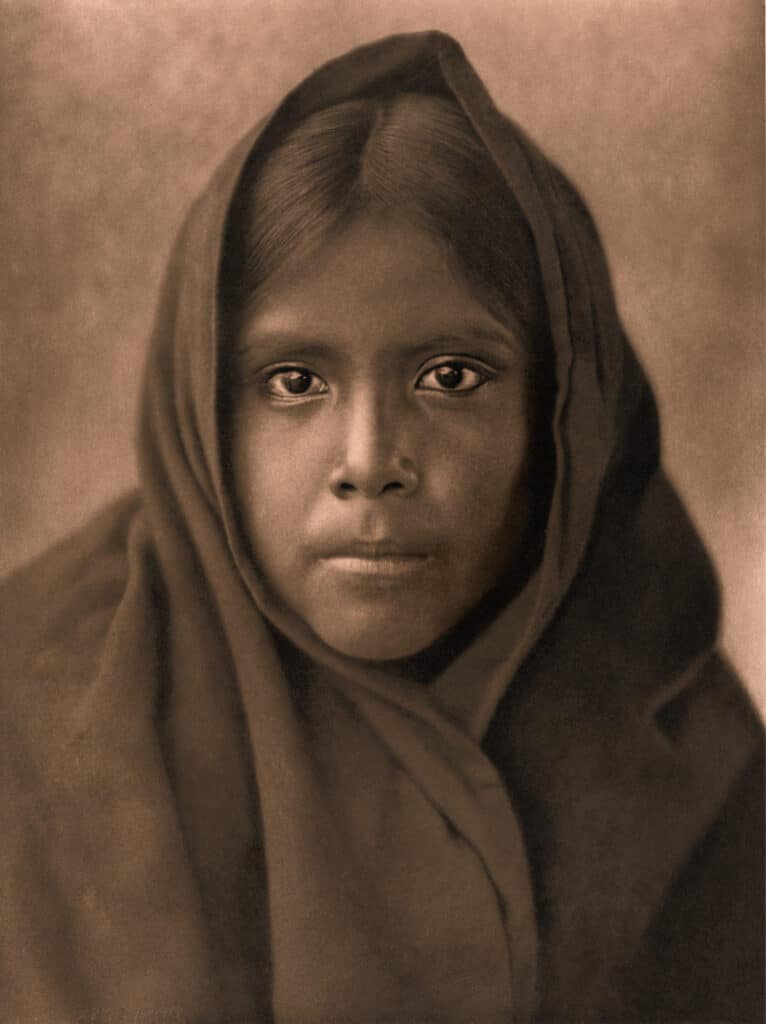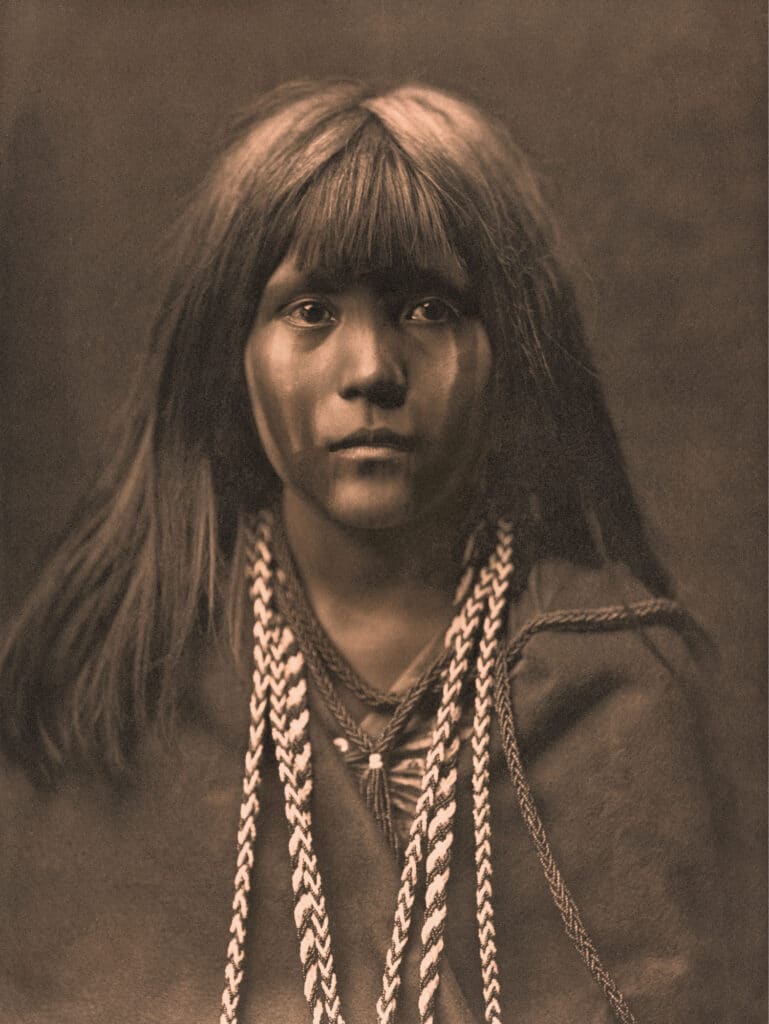“Native people instinctively know whether you love them or look down on them. They knew that I loved them and wanted to do something for them.” Edward Sheriff Curtis (1868–1952) dedicated his life to documenting and preserving the cultural heritage of North America’s Indigenous peoples before it could be, in his words, “lost forever.”
At a time when Donald Trump seeks to “restore truth to American history,” decrying what he calls “ideological indoctrination” driven by the “divisive and inappropriate ideas” promoted by institutions like the Smithsonian museums in Washington, the moment feels not just timely but essential for a renewed visual exploration of Edward S. Curtis’s unique work.
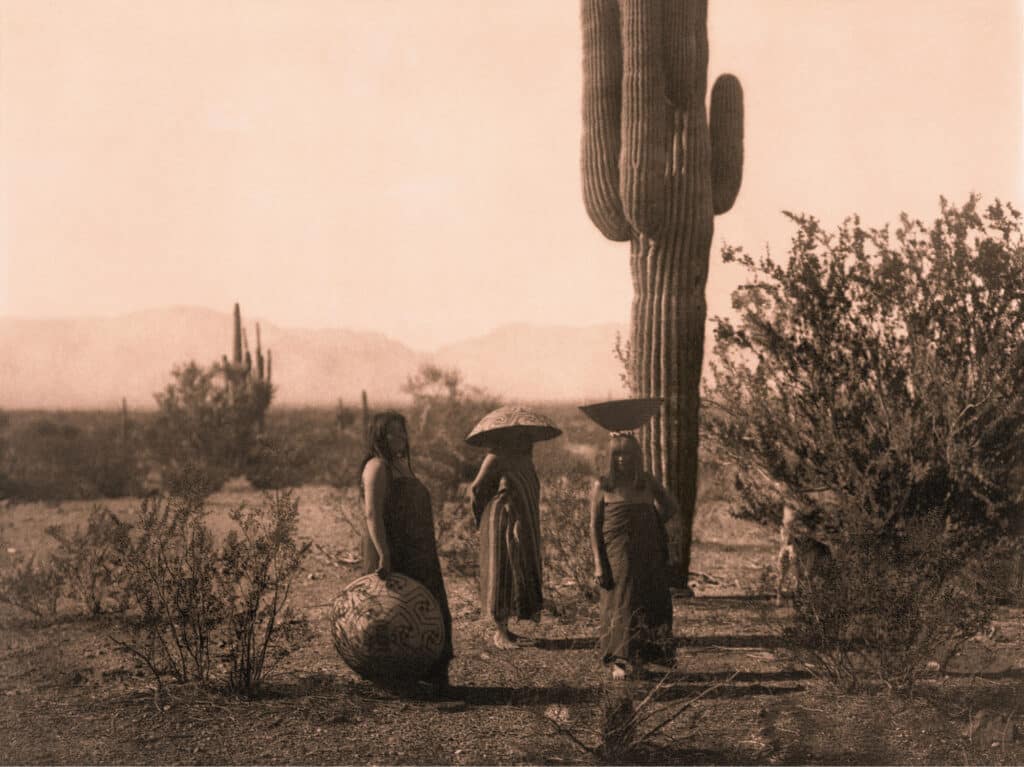
In its latest Clothbound Classic, Taschen invites us to (re)discover more than 700 photographs from Curtis’s colossal and foundational project, beautifully compiled in a collector’s box set. His work was originally published between 1907 and 1930.
An ethnographic challenge
His historic and artistic legacy is woven into the fabric of American culture. And yet, nothing initially pointed Curtis toward becoming one of the greatest ethnographic and anthropological photographers of his time. Known by Native Americans as the “Shadow Catcher,” he turned his exploration into a memorial endeavor—blending texts and images.
Born into a family of four children, Curtis grew up amid poverty, drought, and the lingering scars of the Civil War. His decisive turn came when he entered the burgeoning world of photography in the 1880s. After acquiring a large-format plate camera, he quickly launched a promising career: founding his own studio, working with partners, adopting the latest technologies like the telephone and motion picture camera, and eventually setting off on expeditions.
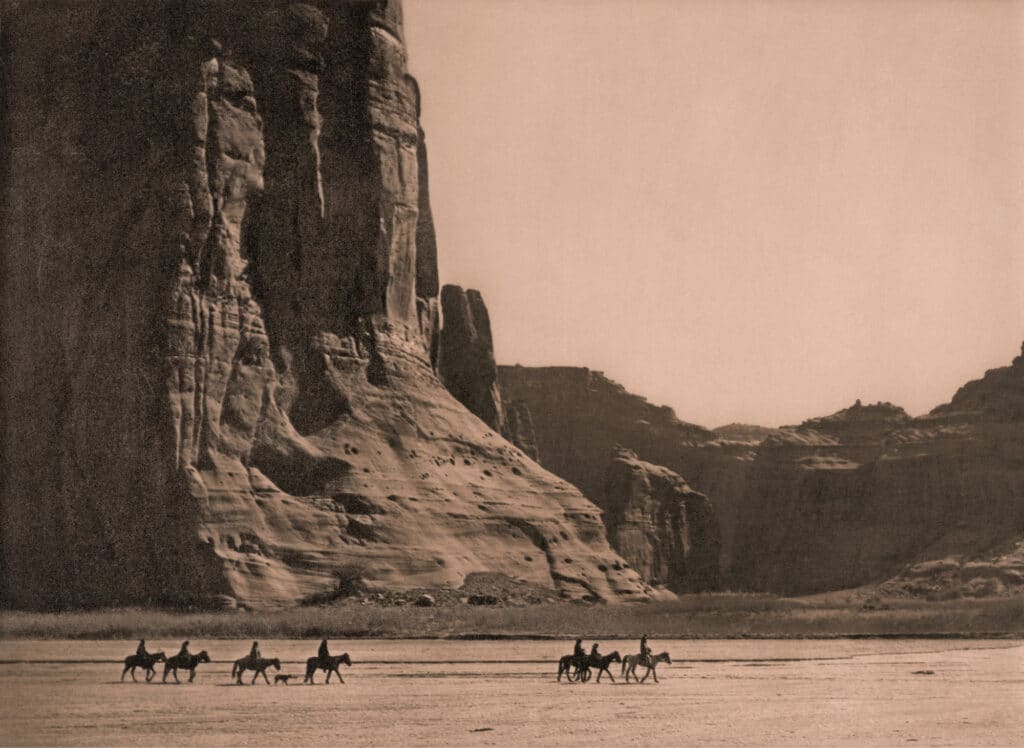
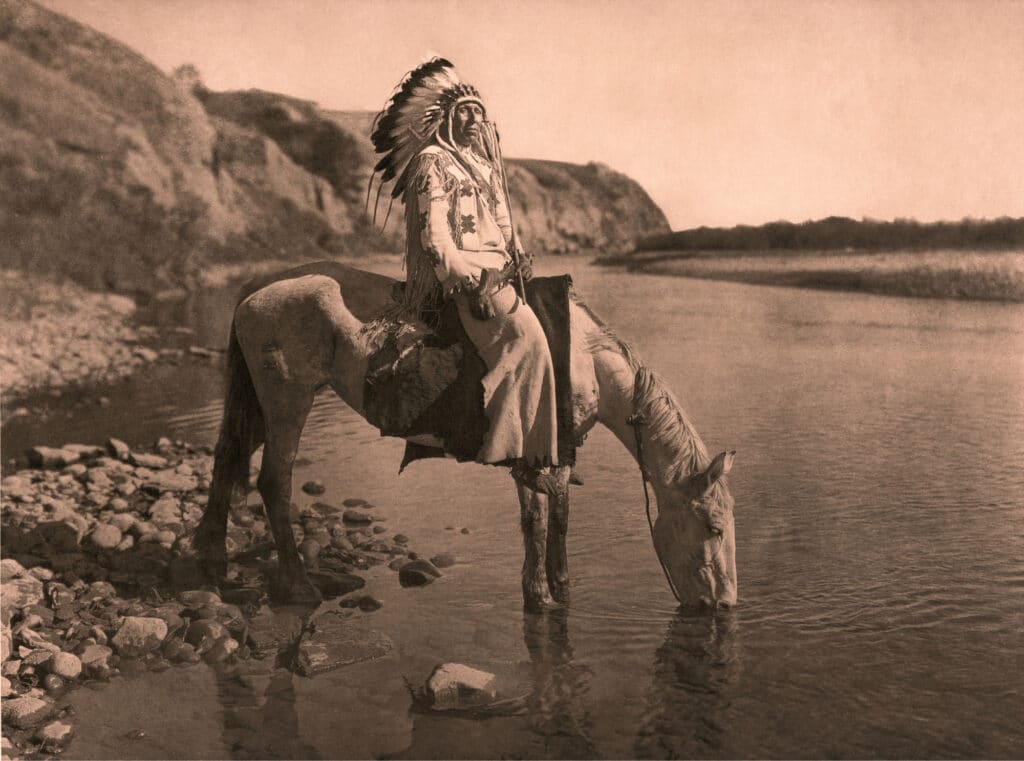
“On foot, horseback, wagon, donkey, boat, train, and later by car,” the adventurer from Wisconsin traversed vast regions of the continent, enduring extreme conditions. His earliest photographs of Native Americans captivated audiences. But soon, Curtis felt an urgent need to become “a witness to the vanishing of cultures for posterity” and to develop what he envisioned as “an encyclopedic documentation.”
By then, European settlers had already begun to decimate Indigenous populations, while the U.S. Army’s cavalry regiments were systematically seizing their lands—millions of acres lost. A pivotal event from this dark chapter in American history: the Wounded Knee Massacre in South Dakota (1890).
An obsessive quest
Curtis roamed North America, documenting the customs and lifeways of over 80 tribes. He takes us on an emotional journey into the spirit of a people, sculpting light to reveal the shadows of the soul and the lived reality of Native Americans. His images are full of humanity, dignity, strength, and intimacy. His vision bears the stamp of universalism.
With support from ethnologist Frederick Webb Hodge at the Smithsonian Institution, U.S. President Theodore Roosevelt, and financier John Pierpont “J.P.” Morgan, Curtis was able—despite great difficulty—to carry out his monumental project The North American Indian. This ambitious undertaking included 20 portfolios and 20 volumes of accompanying text, featuring over 2,000 illustrations and more than 40,000 photographs, produced over three decades.
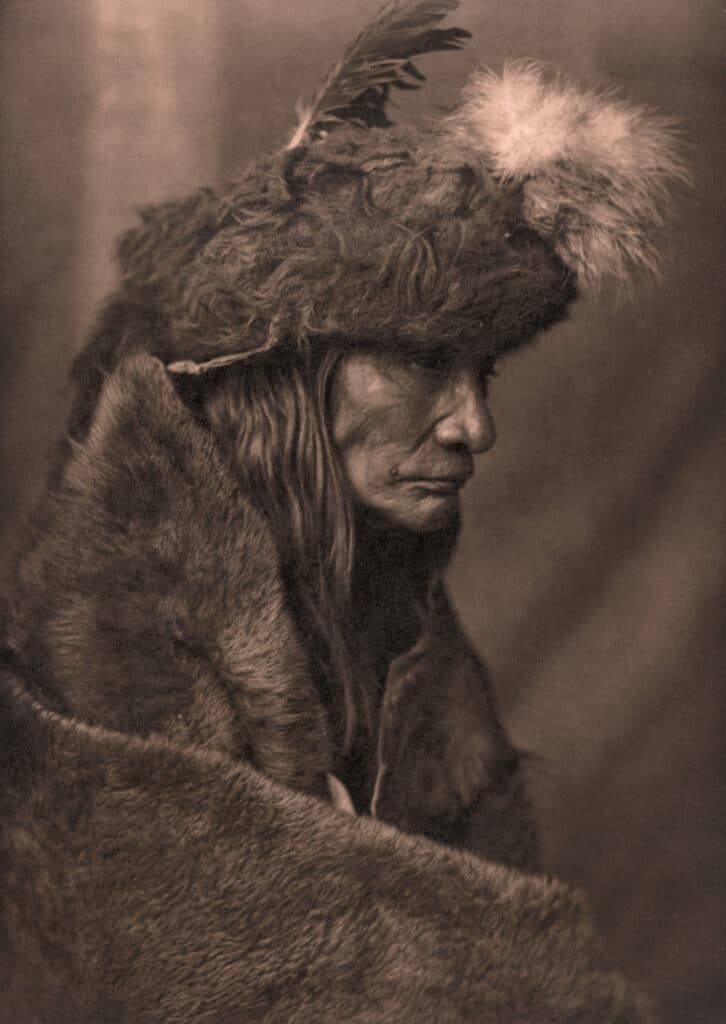
Peter Walther—author of The First World War in Colour (2014) and New Deal Photography. USA 1935–1943 (2016), and a frequent collaborator with Taschen—now retraces Curtis’s footsteps. Thanks to his work, we gain a deeper understanding of many tribes still largely unknown to the public beyond the Cheyenne, Apache, and Sioux. Think of the Nez Percé, Qagyuhl, Crows (Apsaroke), and Hopi—where women wear bun-style hairstyles reminiscent of Princess Leia from the Star Wars saga.
This monumental book immediately captures attention with its atmospheric introduction, blending triumphs and setbacks, sacrifice and tenacity. Walther narrates Curtis’s life and career, evoking an era shaped by the brutality of war, the devastation wrought by colonial empires, the hardship of rural and urban poverty, and also by the dawn of new technologies, photography, and the industrial age.
A sacred legacy
“Great is the satisfaction felt by the author who can finally say to all those who placed unwavering trust in him: it is finished,” wrote Curtis in his final volume, published in 1930. The power of this statement is deeply felt in the images. The box set carries us, page after page, across landscapes from the Pacific Northwest to the American Southwest, through the Great Plains, the Plateau Region, California, and Alaska.
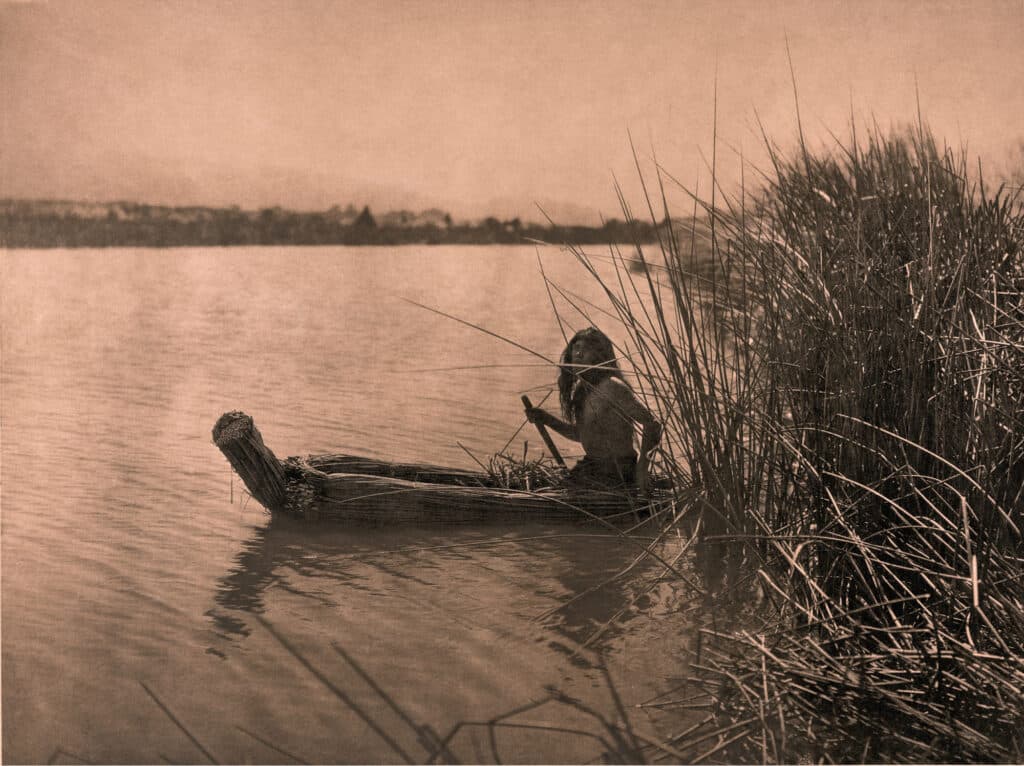
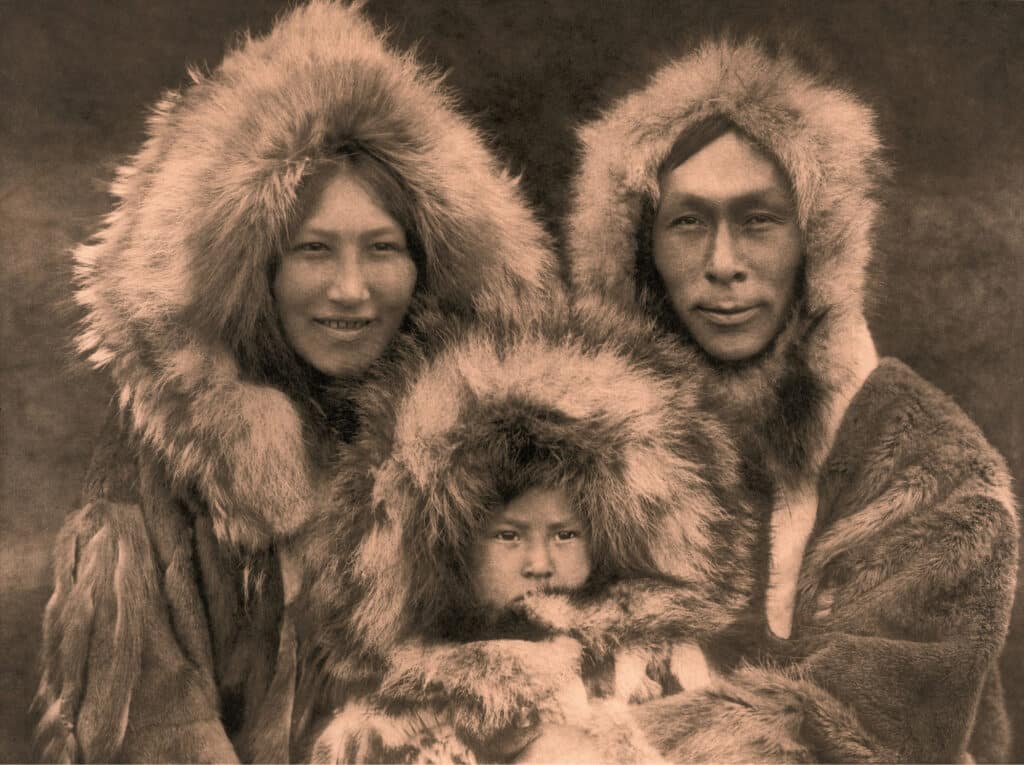
Each photograph moves the viewer with stirring pictorialism: its play of light and shadow, its portraits of time-worn chiefs, its endless, rugged, and arid landscapes, and its everyday scenes that call to mind Arthur Penn’s 1970 anti-Western Little Big Man, which revisits the Native American victory at the Battle of Little Bighorn (1876). Curtis himself visited the site, seeking out veterans to capture their version of events. The project reaches its artistic peak in his majestic sepia prints.
Feathered headdresses, tipis, masks, totems, peace pipes, traditional and ceremonial clothing… Some may argue that these photogravures helped shape the enduring popular image of the “Indian.” Yet, a century later, this work offers something deeper: a return to American roots. A return to the people who, in many cases, gave their names to the very states of the union.
Across these 700 pages of relics from a bygone era, the photographs also remind us that Native communities are still here—present, resilient, and indeed part of “the forces of modernity.”
Edward S. Curtis. The North American Indian. The Complete Portfolios. Published by Taschen, March 2025. 696 pages, $125.

